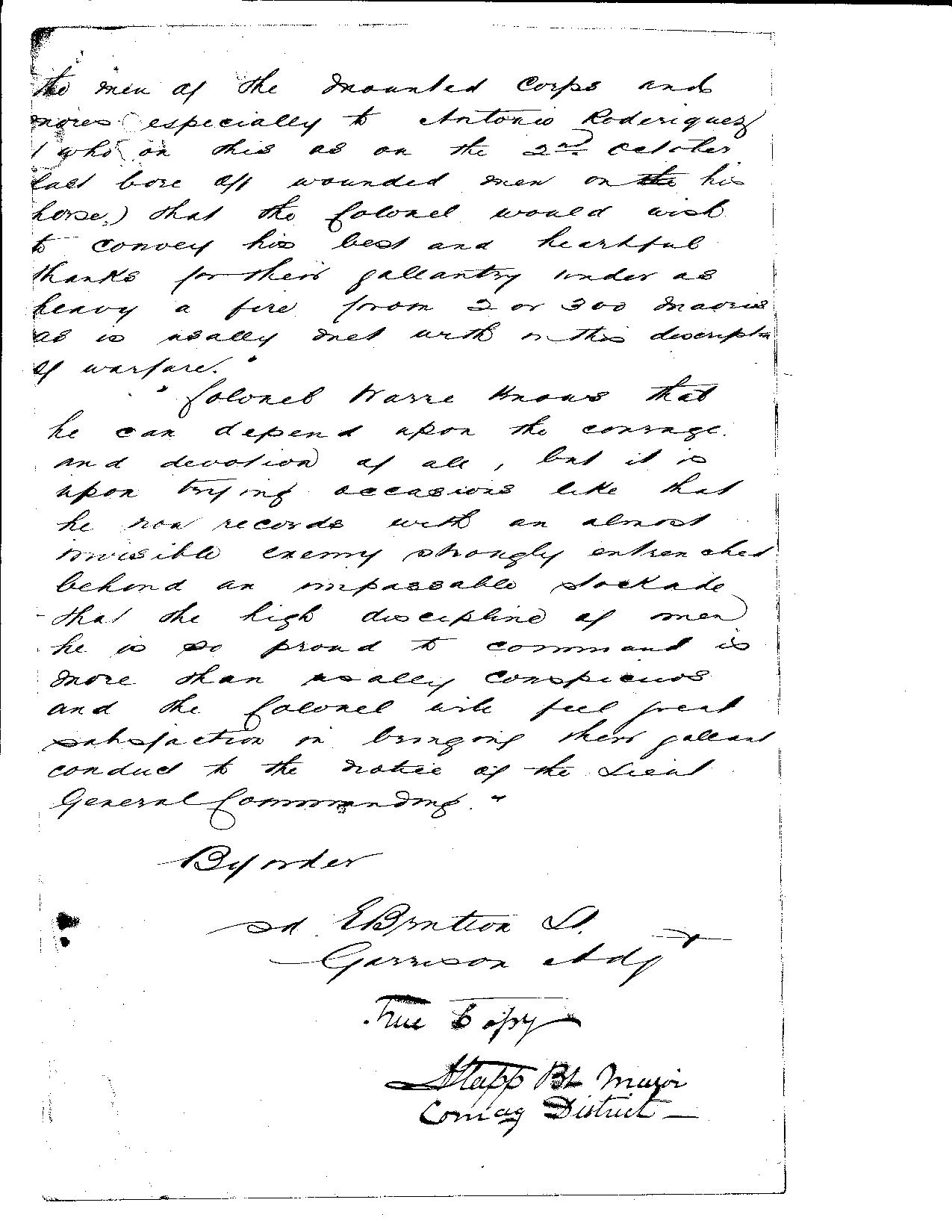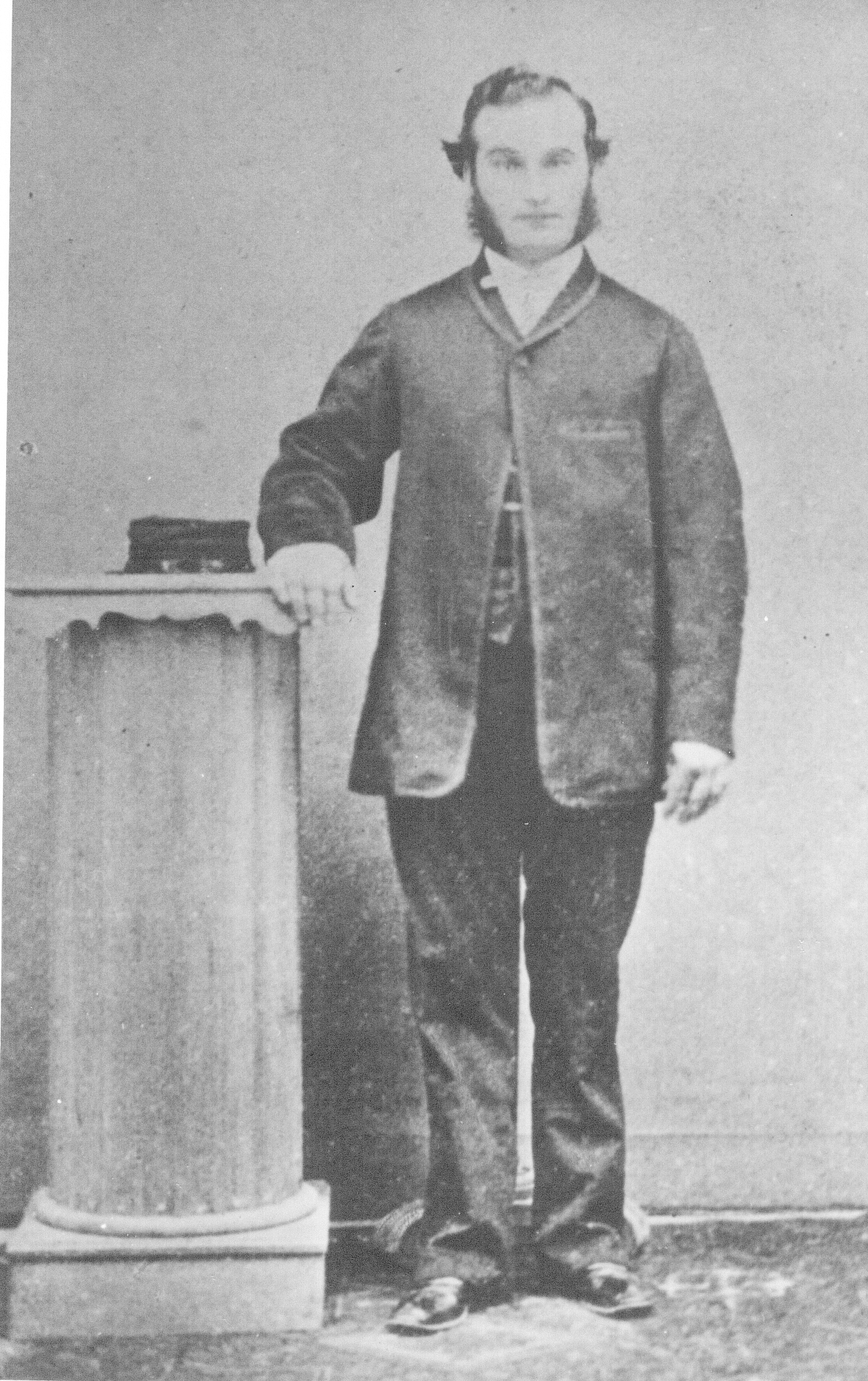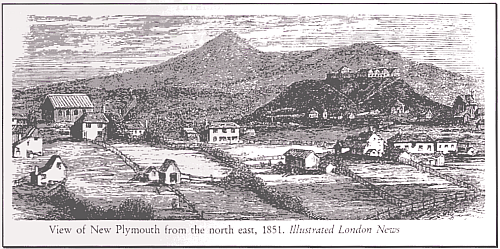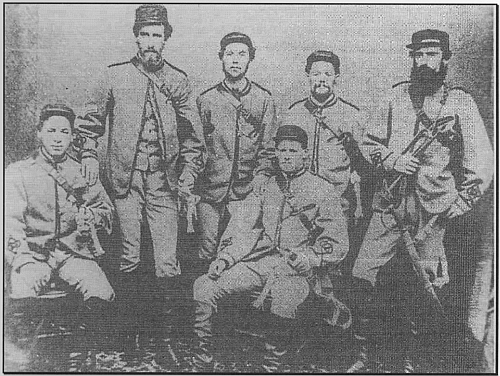
Click to enlarge...

Click to enlarge...
(The Museum must acknowledge gratefully the researches of Gail Lesuma on whose biography of Rodriquez this page principally rests.)

Antonio Rodriquez de Sardinha was born on the Portuguese-owned island of Madeira in 1832, son of a shoemaker and younger brother to Maria Rita. Little is known of his life in Madeira beyond that he took service with a Mr and Mrs Thomas Mace, with whom he had been friendly in Madeira, in order to come with them to New Zealand in 1852 on the barque St Michael. They arrived in New Plymouth, in Taranaki, on 2nd December of that year, and settled on its outskirts in the Omata district. It seems unlikely that they can have fully understood the wider situation of which they now became part, but tensions and uncertainty in the area north of New Plymouth led to the formation of a volunteer military corps in the town in 1859, and the outbreak of war in 1860 prompted both Rodriquez, still a member of the Mace household, to join the Taranaki Militia and Rifle volunteers alongside his master's son Francis.
Picture of young Antonio Rodriquez, c. 1860, Taranaki Museum, New Plymouth

View of New Plymouth, 1851, from the Illustrated London News
Within this militia there was formed a small mounted company called the Taranaki Mounted Volunteers. Rodriquez was among them. In the words of Ms Lesuma:
"The Taranaki Rifle and Mounted Volunteers had the distinction of being the first mounted troops to be used in New Zealand and were noted from the outset of the wars for their gallantry and efficiency....
"The duties of the Mounted Volunteers were various but included carrying dispatches and orders to and from the commanding officers of the various regiments and companies involved in the fighting. They were often involved in rescuing wounded and at times drawn into actual engagement with the enemy. They were equipped with carbines, revolvers and sword, and were instructed by NCOs from the Imperial Cavalry."

Photograph of a group of the Taranaki Mounted Volunteers, 1863 or 1864
In the years between 1860 and 1866 Rodriquez's unit was heavily involved in the actions on Taranaki, and both Francis Mace, who rose to the rank of Captain, and Rodriquez were mentioned in dispatches many times for their bravery and readiness to face danger. Below is reproduced the notice of one such mention extracted from the Omata Garrison Orders, for which the Museum must thank Ms Pamela Marshall and the National Archive in Wellington:
 Click to enlarge... |
 Click to enlarge... |
Of particular note, however, was Rodriquez's conduct during an engagement at Poutoko Redoubt, when the 57th Regiment of the Imperial forces were ambushed by Taranaki Maoris, sustaining heavy casualties. Murray Moorhead, in his book Tales of Old New Plymouth, recorded the felling of one of the Imperial soldiers, Timothy Finn, and two of his fellows, Drummer Dudley Stagpoole and Ensign John Thornton Down, moving to retrieve his body but falling into danger themselves. (An account of the action, and links to Stagpoole's other exploits, with pictures of all three men, can be found here.) He then recorded:
"As they picked up Finn's body, another rescuer appeared. This was Trooper Antonio Rodrigues [sic] de Sardinha, a member of the Taranaki Mounted Volunteers, who had accompanied the Bushranger party as a mounted courier. Rodrigues spurred his horse forward and placed himself and his mount between the rescuers and the bushline to give them cover as they carried Finn to safety....
"While Down and Stagpoole were immediately recommended for their Victoria Cross awards, in the unequal circumstances of the time Rodrigues was not eligible for any awards, no matter how conspicuous had been his act of bravery. Indeed, it must have been of considerable embarrassment to Stagpoole and Down to have been so richly rewarded while the man who had shielded them received no such honours."
If Ensign Down did feel such embarrassment, he did not, sadly, bear it or his VC long: he died of typhoid at Otahuhu camp on 27 April 1866. For the actions of his rescuer, however, and other similar heroics in 1864, there would eventually be recognition.